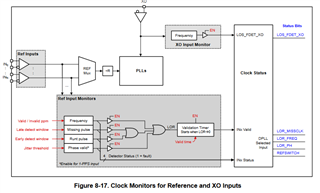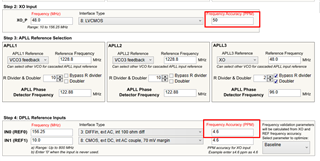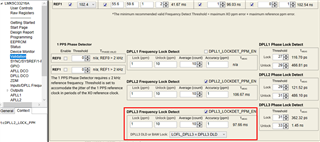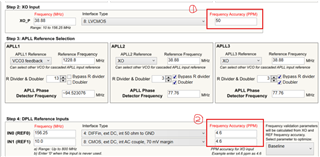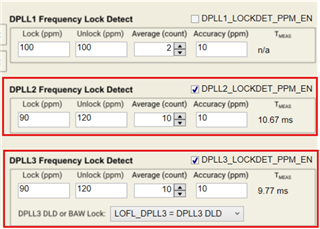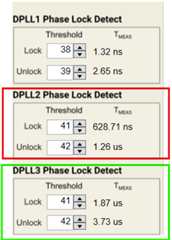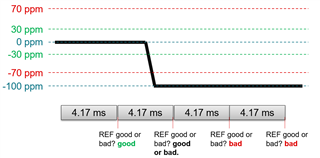Tool/software:
Hi team,
My customer have the following questions related to the TICS pro GUI, please help advise on these.
- As for part1, what’s the decision mechanism of reference LOS? [More questions such as: why was 100/150ppm chosen as a valid/invalid value for the reference input? And so on…]
- As for part2, what’s the decision mechanism of LOFL? [More questions such as: why was 90/120ppm chosen as a lock/unlock value for the frequency lock detect? And so on…]
- As for part3, what’s the decision mechanism of LOPL? How to select Threshold/Tmeas? What’s the relationship between Threshold/Tmeas and ref jitter?
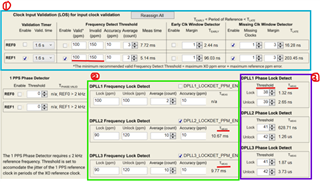
Thanks and best regards,
Johan


